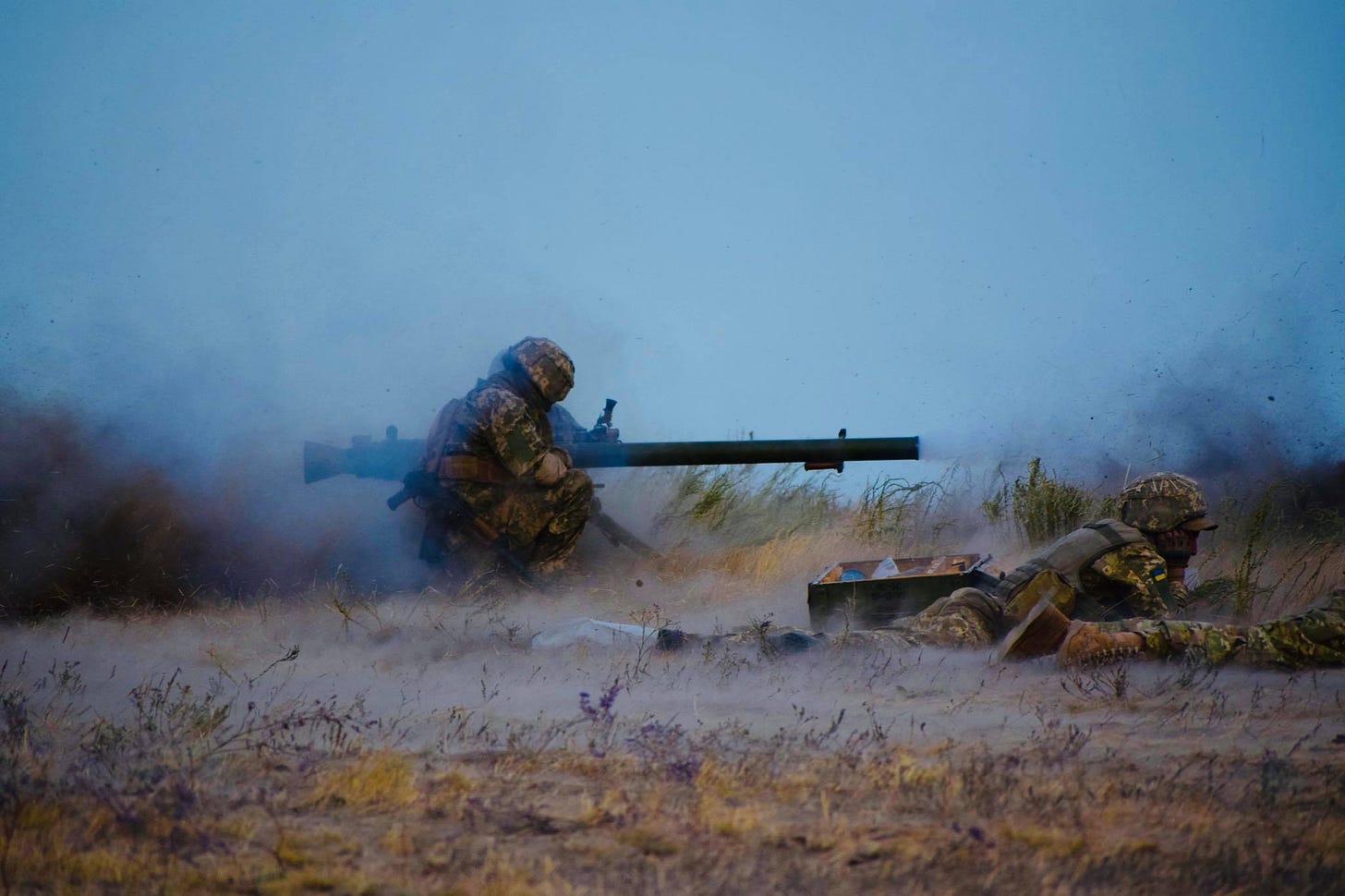Arms Trends in Ukraine: 24 Mar. - 30 Mar. 2025
The latest developments in Ukraine's defence production, arms transfers, and on the battlefield.

Last week, we saw massive Russian strikes on Ukrainian civilian infrastructure in major cities such as Kyiv, Kharkiv, Dnipro, Sumy, and Poltava. Russian drone tactics, including the use of numerous decoy drones alongside strike UAVs, are proving effective in inflicting damage, while Ukraine lacks sufficient air defense systems and missiles to protect its entire territory. Amid all of this, Ukraine-US and US-Russia talks continue over energy and the Black Sea ceasefire.
In this week's edition, I provide key insights into the bureaucratic hurdles of domestic defense production in Ukraine while also highlighting successful Ukrainian innovations, such as the growing artillery systems production, including the famous Bohdana self-propelled howitzer.
For my new subscribers: this newsletter offers a curated selection of news in the context of the Russian war in Ukraine, divided into five categories: military transfers and cooperation projects, defense production and joint ventures in Ukraine, major developments on the battlefield and beyond, other news in the region, and the opinion and analysis section.
Thank you for reading and supporting my work!
Military Transfers and Cooperation Between Ukraine and Its Partners
The NYT published a long and detailed story by Adam Entous, "The Partnership: The Secret History of the War in Ukraine," revealing that the U.S. was more deeply involved in Ukraine's war effort than previously known. According to the report, American military officials worked closely with Ukraine from a command center in Wiesbaden, Germany. There, U.S. and Ukrainian officers planned military strategies, counteroffensives, and shared intelligence on Russian targets.
According to the story, the sinking of the Moskva flagship in April 2022 came as a surprise to the Americans and reflected the disjointed state of the Ukrainian-American relationship in the early weeks of the war: “For the Americans, there was anger, because the Ukrainians hadn’t given so much as a heads-up; surprise, that Ukraine possessed missiles capable of reaching the ship; and panic, because the Biden administration hadn’t intended to enable the Ukrainians to attack such a potent symbol of Russian power.” The same applies to the offensive operation in the Kursk region.
The article also describes the slow pace of advanced weapons deliveries to Ukraine, including long-range weaponry, as well as the restrictions placed on their use. While the U.S. had full authority to impose restrictions on the end-use of its weaponry, its constant fears of crossing Russia’s “red lines” left Ukraine with no choice but to create its own capabilities and make decisions that were not approved by the American side.
I encourage you to read this article, as it provides a detailed account of some important military operations resulting from Ukrainian-American cooperation.
In the meantime, let’s move on to the more recent updates.
On March 25, it was announced that Denmark pledged $140 million to companies investing in Ukraine's defense sector.
The Export and Investment Fund of Denmark (EIFO) is introducing a state guarantee to support Danish companies investing in Ukraine’s defense, which covers up to 70% of Danish companies' investments. EIFO is one of the leading export credit agencies working on recovery projects in Ukraine and supports businesses through: Export Credit Guarantees – reducing the risks of exporting to Ukraine by covering potential payment defaults; Direct Lending – providing loans to Ukrainian buyers of Danish goods and services; Investment Capital – enabling Danish companies to expand operations in Ukraine.



